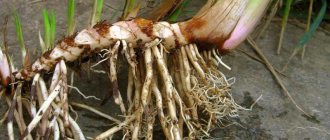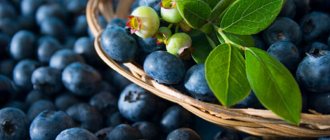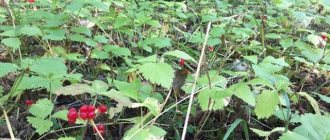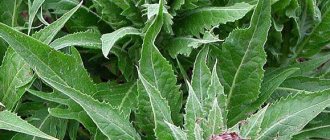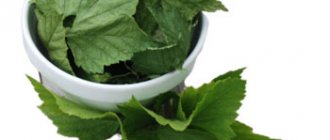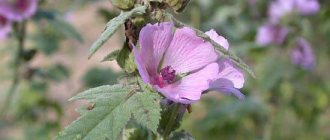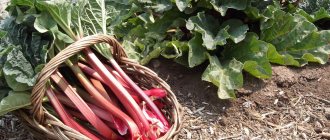Landscape designers and many gardeners are very familiar with this beautiful ornamental plant - bergenia. It can become a spectacular decoration for borders or a bright spot on the lawn. What is attractive about the plant is not only its shiny large dark green leaves, but also its very beautiful flowers collected in inflorescences. Their shape resembles a glass and can be pink, red, or white.
The advantages of this culture include long flowering, which begins in late spring or early summer. However, not everyone knows that this perennial herbaceous plant has long been used to treat various pathologies.
You may have seen tincture of bergenia root in pharmacies. It helps strengthen the immune system, normalize the gastrointestinal tract, and increase male potency. Traditional healers and herbalists successfully use the leaves and roots of bergenia to treat many diseases. What these drugs help with, what medicinal properties and contraindications they have - you will learn about all this from our article.
Description of the plant
Bergenia, which belongs to the saxifrage family, has a second, official name - bergenia. It was given in honor of the famous botanist Carl von Bergen from Germany. The plant is distributed in temperate Asian climates from China and Korea to Afghanistan. It also grows in our country - in Siberia, Altai, and the Sayan Mountains.
The thick root of perennial bergenia can branch and spread along the surface of the soil. From the rhizome grow leathery foxtails, the length of which can reach 35 centimeters. There are several varieties of the plant. The most common ones are:
- Pacific bergenia. The plant has bright flowers with a soft lilac tint. They resemble small bells. Large (up to 20 cm in diameter) rounded leaves are painted in a rich green color.
- Bergenia cordifolia. The height of this plant ranges from 20 to 40 centimeters. The beautiful inflorescences can be lilac, white, violet or pink, and the heart-shaped leaves are dark green.
- Bergenia thickleaf. It is this variety that is most often used in folk medicine. Thick-leaved bergenia grows up to 50 centimeters. Its beautiful dark pink flowers and light green leaves turn reddish-brown in the fall.
Medicinal properties of bergenia root and leaves
The large amount of tannins contained in bergenia gives it numerous beneficial properties. Based on this plant, pharmaceutical preparations are prepared that are endowed with astringent, hemostatic, antimicrobial, and anti-inflammatory properties. This allows the use of bergenia in many areas of medicine to achieve antibacterial, diuretic, healing, anti-stress, immunomodulatory, antipyretic, and antitumor effects. Roots and leaves of plants in preparations and in their natural form are used in:
- gynecology - for the healing of erosive processes, treatment of heavy menstruation, which manifests itself against the background of inflammation, in the presence of fibroids, uterine fibroids;
- proctology - to stop hemorrhoidal bleeding, vascular permeability, swelling;
- dentistry - as an effective remedy for frequent diseases of the oral cavity (inflammation, gingivitis, stomatitis, periodontitis).
In addition to the listed industries, bergenia is used in folk medicine to relieve patients from:
- diarrhea of an infectious nature (in combination with sulfonamide antibiotics they have high activity against various pathogens of intestinal infections);
- pulmonary tuberculosis (as part of complex therapy to heal aphthae faster);
- throat diseases (including sore throat, laryngitis);
- headaches;
- rheumatism;
- diseases of the gastrointestinal tract;
- high blood pressure (has a tonic effect on blood vessels);
- wounds (powder from the root is sprinkled on open purulent wounds).
Bergenia root
Benefits for women
Bergenia root is an excellent remedy in the fight against many common gynecological problems. It is used to suppress the manifestations of thrush, reduce fibroids and suppress the development of cervical erosion. For all kinds of inflammation of the pelvic organs, incense decoctions are used, which are both taken orally and used in the form of baths and douching solutions.
Release forms
Bergenia root is supplied to pharmacies in our country in packages of 30-100 g of crushed raw materials, in the form of an alcohol tincture (50 ml) or in the form of powder in filter bags. The crushed raw material consists of pieces of root, scales of leaf petioles of light pink or light brown color. It has a pronounced astringent taste.
Pharmacy tincture is a dark brown liquid with a characteristic odor. Instructions for using bergenia root in the form of a tincture are included with each package. It is used for external use, gargling and mouthwash, in gynecology. The drug is taken internally according to the instructions or as prescribed by a doctor for diseases of the gastrointestinal tract, lungs, colds and flu.
As a rule, doctors prescribe a course of treatment with tincture and give their recommendations on dosage and duration of treatment depending on the disease and condition of the patient. According to the instructions, the tincture should be taken orally, ½ spoon (teaspoon) 30 minutes before each meal. Treatment can last from a week to three. Then you need to take a ten-day break and, if necessary, repeat the course.
For preventive purposes, the tincture is used in the same way, but the drug is taken for a week. Repeat the course every three months.
Best before date
24 months
Vitamins with similar effects
- Maxiflorum with Valerian (Oral tablets)
- Incas gold. Men's Formula (Oral Tablets)
- Encaps (Capsule)
- Influence (Capsule)
- Set of herbs No. 4 (Oral tablets)
- Narosan Orange (Oral liquid)
- Marine calcium for children with iron (Oral tablets)
- Marine calcium for children with manganese (Oral tablets)
- Pankramin (Powder for oral solution)
- Pantohematogen "Altamar™-1" (Capsule)
The description of vitamin Bergenia thickifolia is intended for informational purposes only. Before starting to use any drug, it is recommended to consult a doctor and read the instructions for use. For more complete information, please refer to the manufacturer's instructions. Do not self-medicate; EUROLAB is not responsible for the consequences caused by the use of information posted on the portal. Any information on the project does not replace consultation with a specialist and cannot be a guarantee of the positive effect of the drug you use. The opinions of EUROLAB portal users may not coincide with the opinions of the site Administration.
Are you interested in vitamin Bergenia thickifolia? Do you want to know more detailed information or do you need a doctor's examination? Or do you need an inspection? You can make an appointment with a doctor - the Euro lab is always at your service! The best doctors will examine you, advise you, provide the necessary assistance and make a diagnosis. You can also call a doctor at home . Euro lab clinic is open for you around the clock.
Attention! The information presented in the vitamins and dietary supplements section is intended for informational purposes and should not be a basis for self-medication. Some of the drugs have a number of contraindications. Patients need to consult a specialist!
If you are interested in any other vitamins, vitamin-mineral complexes or dietary supplements, their descriptions and instructions for use, their analogues, information about the composition and form of release, indications for use and side effects, methods of use, dosages and contraindications, notes about the prescription of the drug for children, newborns and pregnant women, price and consumer reviews, or you have any other questions and suggestions - write to us, we will definitely try to help you.
ethnoscience
Herbalists and traditional healers use the leaves of the plant - they are collected and dried after winter, and then prepared as a tea. Such tea is today known as Chigir or Mongolian tea. But it is the bergenia root that is most often used for medicinal purposes. What is treated with drugs based on it?
The roots contain powerful polyphenolic compounds with antioxidant properties. It is thanks to polyphenols that the roots of this plant help:
- normalize metabolism;
- prevent the development of atherosclerosis;
- improve metabolism by burning fat;
- reduce the risk of developing heart and vascular diseases.
Thanks to these medicinal properties, bergenia roots in the form of a decoction are used to improve blood circulation and strengthen the walls of blood vessels.
Contraindications and harm
Some traditional healers claim that bergenia is a completely safe plant. But, like any medicine, this culture has its contraindications. In order not to harm your body, you should limit the use of decoctions, infusions and other forms of incense to people suffering from:
- tachycardia;
- angina pectoris;
- arrhythmia;
- chronic constipation;
- increased blood clotting;
- low blood pressure.
An absolute contraindication for use is individual intolerance to the plant and its components.
Before starting treatment, you should consult your doctor for advice.
How to brew tea from bergenia leaves
The leaves of the plant have long been used to make healthy tea. It was first brewed in Siberia, China and Mongolia, which is why people often call it Chigir or Mongolian. This drink is characterized by a rich cedar aroma, it is dark brown in color and has an unusually pleasant taste.
Tea is prepared from bergenia leaves that have overwintered under the snow, which are placed in a crushed ceramic vessel (teapot, saucepan), 500 ml of boiling water is poured in and infused for 20 minutes.
The finished drink has a bright taste, is slightly astringent in the mouth and is useful for:
- strengthening the walls of blood vessels;
- treatment of pneumonia;
- prevention and treatment of gynecological diseases;
- healing from diarrhea;
- improving the body's condition under stress.
Application
Representatives of traditional medicine use bergenia preparations for:
- lung problems;
- respiratory diseases;
- cough, flu;
- duodenal ulcer;
- gastritis;
- gynecological diseases;
- bleeding after childbirth;
- liver diseases;
- hemorrhoids;
- uterine fibroids;
- sore throat;
- thrush;
- stomatitis.
To date, the medicinal properties and contraindications of bergenia have been well studied. Decoctions, infusions, alcohol and water tinctures are prepared from the leaves and roots of the plant.
Health benefits and harms of bergenia. Medicinal properties and contraindications
Bergenia or Saxifraga thick-leaved grows on stony, rocky soils, as if making its way out through any possible crack. This plant was used by Tibetan monks, who used it to treat urolithiasis and many other ailments. The high content of nutrients and a large number of medicinal properties make bergenia popular in folk medicine in many countries around the world.
To get the maximum effect from the leaves and roots of the plant, it should be harvested immediately after the flowers have withered. Then you need to cut and dry the leaves, dig up, clean and store the root in a dark, cool place.
Perennial herbaceous plants, the type species of the genus Badan of the Saxifraga family.
External use
Compresses and lotions made from incense decoction will help reduce bruises and speed up the healing of ulcers and wounds. To prepare it, pour 250 ml of boiling water into three tablespoons (tablespoons) of dried and crushed raw materials and place on low heat. The liquid should evaporate by half. Strain the mixture and apply compresses to the affected areas three times a day.
This decoction can be used for rinsing with seborrhea, diluting it with water (1:10) before use. At least 10 procedures are required.
Bergenia tincture
We talked about the fact that an alcoholic tincture of bergenia can be purchased at a pharmacy. If you do not have such an opportunity, you can infuse bergenia root with vodka. The medicinal properties of such a drug are in no way inferior to those from the pharmacy. The crushed raw materials (40 g) are poured with high-quality vodka (100 ml). The container is tightly closed and put in a dark place for 14 days. Shake the bottle periodically. After this, the composition should be filtered and stored in a cool place. Vodka tincture is used to treat diseases of the bronchi and lungs. Before taking, you need to dissolve 30 drops of tincture in a tablespoon of water. Take the composition half an hour before meals.
Making Mongolian tea
It is also called “Chagirsky”.
Acts on the body as a general tonic and helps improve metabolism due to the content of tannins. Crushed leaves (2 tablespoons) are poured into 0.5 liters. boiling water This mixture is allowed to brew for 9-11 hours and taken 1/4 cup half an hour before meals, 3 doses per day. The dosage may be different, but you should not overdo it, as bergenia increases the pressure in the walls of blood vessels. It is better to collect tea leaves from the bottom of the plant in the spring; they are also called “overwintered bergenia”. Dried leaves can be stored for no more than two years.
Our ancestors used the following recipe: peeled leaves were rinsed with cold water, placed in a cast-iron bowl and sent to simmer in the oven for 8 hours, after adding honey and stirring. The finished product was considered tea leaves.
Use in gynecology
Bergenia root is used in gynecology in the form of a decoction of the roots for douching. In addition, it can be used in the treatment of the genitourinary system. To prepare the decoction, you need six tablespoons (tablespoons) of crushed raw materials, brew 0.4 liters of boiling water and place in a water bath for a quarter of an hour. The composition must be cooled and strained. For douching, the decoction is used diluted in a ratio of 1:10. Boiled water is used for dilution.
For internal use during postpartum bleeding or heavy menstruation, prepare a decoction in the same way from one spoon of raw materials and a glass of boiling water. Take the remedy before meals three times a day, a tablespoon.
Medicinal properties
Despite the fact that bergenia teas and infusions are very useful, it is still recommended to consult a doctor before use.
Traditionally, bergenia is considered a male plant, since it has a positive effect on male strength.
Medicinal properties of bergenia:
- acts as an anti-inflammatory and antimicrobial agent;
- has an astringent and diuretic effect;
- helps strengthen the body, has an invigorating effect on it;
- has a hemostatic effect;
- has a beneficial effect on metabolism;
- strengthens the human immune system;
- has a positive effect on the cardiovascular system;
- acts as a prophylactic against cancer.
We recommend reading: How to make sea buckthorn jam
With the help of bergenia, many diseases are treated, for example, high blood pressure, cervical erosion, dysentery, and fever.
Tea made from bergenia leaves strengthens the immune system, increases performance and helps fight depression and stress. Women can also drink it during their menstrual cycle if their periods are too long and heavy. In this case, it will act as a hemostatic agent. Bergenia also has a positive effect in the treatment of erosions.
If you periodically rinse your mouth with a decoction of bergenia leaves, you can get rid of bad breath.
The leaves are also effective in treating hemorrhoids, dysentery and diarrhea. Compresses based on bergenia decoction prevent infections from entering wounds, remove pus and promote rapid healing.
Quite often the plant is used to treat acne. Tea also rejuvenates the skin, making it elastic and fresh. In addition to all this, it reduces sebum production and tightens pores. In addition to all the healing properties, tea with the addition of leaves of this plant is very tasty.
The root of the plant is often used to treat gastrointestinal diseases, such as colitis, dysentery, and enterocolitis. Use together with antibiotics enhances their effect on the body.
Bergenia root has also proven itself to be effective in the treatment of various gynecological diseases. Like the leaves, dried roots are used to stop heavy menstruation and restore the body after abortion. You can also drink decoctions for cervical erosion, inflammation of the appendages and fibroadenomas.
Treatment of diarrhea
The use of bergenia root for diarrhea is due to the tannins it contains. A decoction prepared from the roots of a medicinal plant can be taken by both adults and children over three years of age. If a child has an upset stomach, prepare a healing tea from a teaspoon of roots and 250 ml of boiling water. The tea should be steeped for ten minutes, after which it must be strained. Give the child a glass of the drink in the morning and evening. To improve its taste, you can add a spoonful of natural honey to it.
For adults with such problems, prepare a decoction of the roots from a tablespoon of raw materials and 200 ml of boiling water. The roots are brewed for half an hour under a closed lid. After this, the composition is placed on low heat and boiled for three minutes. The broth is filtered, cooled at room temperature and taken before meals three times a day, one tablespoon (tablespoon).
This decoction can also be used to treat children with intestinal disorders, but the dosage is halved (1/2 tablespoon).
Use in home medicine
As mentioned earlier, dried roots and leaves of bergenia help treat many diseases, but in any case, before using a medicinal plant, you should consult a doctor. Most often, tinctures, decoctions or teas with the addition of plant parts are used to treat diseases.
Decoctions
- A decoction of bergenia leaves to treat a throat. For cooking you should take about 1 tbsp. l. finely chopped roots and 225 ml of boiling water. Pour a glass of boiling water over the rhizomes and place on low heat (or in a water bath). Boil for half an hour. Strain and gargle with this decoction several times a day.
- Decoction for compresses. Take 2.5 tbsp. l. roots, pour in 250 ml of water and boil until only half of the liquid remains in the pan. Squeeze out the roots and cool the broth to room temperature. Soak a towel in it and apply to wounds and abrasions. The same decoction can also be used in the treatment of seborrhea. Before use, dilute the decoction with warm water and rinse hair after washing. Course - 10 procedures.
- A decoction for treating a runny nose. To prepare the decoction, you need to take 50 g of bergenia leaves, elecampane and 100 g of St. John's wort leaves. Pour two cups of boiling water over the raw material, put the container on the fire and boil for 20 minutes. Then let the broth brew for no more than 90 minutes. Take 20 ml orally no more than 3 times a day. If you add a few drops of sea buckthorn oil to this recipe, you can cure even the most persistent runny nose.
We recommend reading: Benefits and harms of Eleutheroccus, medicinal recipes
Infusions
- Infusion for the treatment of rheumatism and arthritis. 1 tbsp. l. Add dried bergenia roots to a glass of boiled filtered water. Boil the infusion over medium heat for 20 minutes. After 20 minutes have passed, remove the pan from the heat, wrap it in a warm cloth and leave to steep for an hour. Strain through a fine natural cloth. Take 50 ml no more than 4 times a day.
- Infusion for the treatment of skin diseases, sore throat, stomatitis. 3 tbsp. l. Dried bergenia roots must be filled with 3 cups of boiled water. Pour the infusion into a thermos and leave for several hours, then filter. Gargle your throat and mouth with it 4 times. For problem skin, the infusion prepared according to this recipe is used as compresses and lotions.
You may be interested in an article about treating pneumonia at home.
There is also a useful article on the treatment of neurodermatitis in adults and children.
Here you will learn about the medicinal properties of the coltsfoot plant.
Tinctures
- Tincture of bergenia leaves for the treatment of acne. Pour fresh bergenia flowers with alcohol or vodka and leave to infuse for several weeks in a dark place. Wipe with a cotton pad soaked in alcohol tincture on the skin of the face where there is redness or pimples. You can also wipe the T-zone if it is prone to oiliness.
- Tincture for the treatment of diseases of the lungs and respiratory tract. To prepare the tincture you will need 100 ml of vodka and 45 g of crushed roots. The raw materials are poured with vodka, the jar is tightly closed (it is better to take glass containers) and put away in a place where the sun's rays will not reach for 10-14 days. After 14 days have passed, the tincture is filtered. Before use, 30 drops of alcohol tincture must be diluted in 1 tbsp. l. filtered water. It should be taken three times a day before meals.
Extract
Extracts are the most concentrated substances compared to infusions or decoctions. In order to prepare the extract yourself, you need to take 75 g of bergenia rhizome and pour 250 ml of boiled filtered water over it. Place on the fire, cover tightly with a lid and cook over low heat. The extract should be stirred periodically.
We recommend reading: The healing properties and harm of white cinquefoil, folk recipes
When only half of the liquid remains in the pan, it can be removed from the heat and strained through a thin cloth. It is recommended to use it 25 drops three times a day.
This extract can be used for douching for various gynecological diseases. Dilute 1.5 tbsp in 560 ml of warm water. l. After the douching procedure, you can take a bath with the addition of the same extract for 15 minutes. The course of treatment is two weeks.
Bergenia extract is also widely used to treat dental diseases. Dilute 1 tbsp in 100 ml of warm water. l. extract, rinse the mouth 2-3 times a day.
Haemorrhoids
Bergenia root will relieve the symptoms of hemorrhoids. Warm baths are recommended for this. To prepare them, you will need 30 grams of bergenia root and 0.5 liters of water. Pour the crushed raw materials into a thermos and fill it with boiling water. The composition is infused for at least an hour. After this, you need to strain and pour into a small bowl, diluting with water in a ratio of 1:2. The bath temperature should be no higher than 40 degrees. The duration of the procedure is no more than 20 minutes.
To eliminate the symptoms of the disease, it is necessary to complete the course of treatment completely. It lasts 15 days, although, according to reviews, you will feel relief and pain reduction after the first procedure.
Application in oncology
Decoctions, infusions and tinctures from bergenia root can be included in a course of complex therapy in the treatment of cancer. An example of this is treatment according to the Golyuk method, which combined the most effective means of traditional medicine in the treatment of this formidable disease. This method, developed by a famous folk healer, consists of treatment using a combination of medicinal plants: celandine, marina root, bergenia and eleutherococcus.
The course of treatment using the Golyuk method lasts three months and consists of sequentially taking the following tinctures:
- Peony (marina root) - take 30-40 drops three times a day during the entire course of treatment.
- Bergenia roots - take two teaspoons for three days an hour before meals in the morning, afternoon and evening.
- Celandine - take a tablespoon 40 minutes before meals three times a day for the next three days.
- Then take eleutherococcus tincture for three days - a teaspoon half an hour before meals.
Then they again begin to take the infusion of bergenia and the rest of the herbs in the described sequence until the full course of treatment has been completed (three months). Before use, alcohol tinctures are diluted in 50 ml of water. If metastases are detected in the liver, alcohol tinctures should be replaced with water ones. Apply compresses from incense infusion to the area of the neoplasm twice a day. In the first month and a half, the infusion is diluted with water in a ratio of 1:2; in the second half of the course, undiluted infusion is used for compresses.
Bergenia root
Harvesting of rhizomes begins in late spring, early summer - they are dug up, thoroughly washed, dried, covered with paper or thick fabric. Large roots are crushed. As a result of drying, approximately 240–250 grams of dried roots come out of one kilogram of succulent roots. Carefully dried roots of the medicinal plant can be stored without spoilage for over three years. When dry, they do not bend, crumble very easily, and have a straw or pink color in broken places.
How to brew bergenia root
In Tibet, the medicinal incense was given the name “Super-Yang”. This emphasizes the special respect and interest of the male half in the plant from which tea is made. Beautiful, dark brown in color, it has a slightly astringent taste and aroma of cedar.
Both leaves and roots of bergenia are used for the drink. They drink tea in the morning; for brewing, they use boiled hot water at 90–100°C, which is poured over the roots of the medicinal drug. Even more recipes in the article: beneficial properties of bergenia tea.
The calculation for welding is as follows:
- for 150 ml of water – 1 teaspoon of roots. Cover the dish with a napkin and leave for 7–10 minutes to infuse.
Preparation and use of elixirs
Properly brewed tea gives strength, improves metabolism, and improves body tone. Decoctions, rubs, lotions from bergenia were used as a healing agent in the treatment of:
- tuberculosis and pneumonia, influenza;
- nephritis and urinary tract diseases;
- diseases of the gastrointestinal tract, dysentery, botulism;
- hypertension and headache;
- inflammation of the oral cavity, laryngitis;
- depression and neuroses;
- rheumatic polyarthritis and arthrosis;
- hemorrhoids;
Also, elixir from bergenia root is effective for female diseases, such as erosion or fibroids. This list of uses of medicinal incense is by no means exhaustive.
Preparing a decoction is not difficult:
- One tablespoon of bergenia root (crushed) is brewed with 200 ml of boiling water. Cover the tea with a lid and heat over low heat for 30 minutes. The finished broth is filtered, the roots are squeezed out and thrown away.
It is recommended to use the decoction three times a day, one teaspoon, always after meals.
Important! For external diseases, the decoction is used in the form of baths and lotions.
Inflammation of the oral cavity is treated with a slightly different composition. For the decoction:
- for one glass of water - two tablespoons of medicinal root, so that the concentration of astringents becomes more saturated.
Bergenia root, use for rheumatoid arthritis
To cure rheumatism and arthritis of any kind, infusions for rubbing in alcohol-containing liquids are prepared:
- 20 grams of crushed bergenia root are poured with a liquid (200 ml) containing alcohol and left to infuse in a dark place. Infusion time is 2–3 days.
The rub is used externally, lubricating and rubbing into sore joints 3-4 times a day. A decoction or tea (recipe above) is drunk simultaneously with the use of rubs.
Bergenia root use in oncology
Infusions, decoctions and tinctures from bergenia root, together with other medicinal drugs, are an effective and proven remedy in the treatment of cancer. An example would be treatment using the Golyuk method, where only a few types of herbs are involved, one of them is bergenia.
The Golyuk method as the last chance to overcome cancer
Those who have ever encountered a disease such as cancer have probably heard about Golyuk’s method of treating it. This method was created by a traditional healer and combines treatment using a combination of five medicinal plants: celandine, Sophora japonica, Eleutherococcus, marina root and bergenia.
Course of treatment with folk remedies
The treatment itself lasts 3 months, during which time it is necessary to alternately take plant infusions. A specific infusion for each day:
- the first three days you need to drink infusion of incense;
- on the 4th day – tincture of celandine;
- on the 5th and 6th days - tincture of Japanese Sophora;
- days seven to nine - infusion of eleutherococcus.
From the tenth day, take infusions according to the indicated scheme, starting from the beginning. Maryin root - daily.
Very important! Some of these plants are poisonous, and they must be taken strictly in the indicated doses, otherwise you can poison the body.
Preparation of infusions from medicinal plants
- Infusion of bergenia root: 50 g. Grind the root and pour in 350 grams of 60-degree water. Leave for 8 hours.
- Tincture of marina root: pour 50 grams of root with vodka.
- Celandine tincture: pour 12 g of vodka, leave for 5 days
- Tincture of Japanese sophora: cut 1/5 kg of sophora into pieces and fill with vodka.
- Eleutherococcus: cut 100 grams into pieces and pour 500 grams of vodka.
Keep tinctures of marina root, Sophora japonica and Eleutherococcus for ten days away from sunlight.
Bergenia contraindications
It is necessary to take into account the medicinal properties and contraindications of bergenia when using drugs based on it. Do not forget that the vast majority of medicinal herbs have contraindications, and treatment with them, instead of the expected benefits, can be harmful to health. Badan in this sense is no exception.
Some compounds found in bergenia roots may affect blood clotting. Therefore, people prone to blood clots should not use these drugs. In addition, you should avoid treatment with bergenia-based drugs if:
- hypotension;
- angina pectoris;
- tachycardia;
- chronic constipation;
- arrhythmias;
- increased blood clotting;
- thrombophlebitis;
- individual intolerance.
Any preparations based on bergenia can be used only after consultation with a herbalist or attending physician.
Description
Bergenia is a medicinal plant, also known as Saxifraga pachyfolia or Bergenia papulifolia. Since tea is often brewed from bergenia, sometimes the plant itself is called “Mongolian” or “Chigir” or “Siberian” tea. However, not everyone knows that bergenia can be consumed as a healthy drink: in some cases, bergenia is grown only as an ornamental plant decorating gardens and personal plots. This is facilitated by the attractive appearance of bergenia: reddish stems, shiny rounded leaves and dense inflorescences of small pink or purple flowers.
In nature, the distribution areas of bergenia are many regions of Siberia, Kazakhstan, Primorsky Krai, as well as Mongolia, Korea and China. Saxifraga thickleaf, true to its name, prefers to grow on rock fragments, on stones, rocky slopes, often in the mountains, at very high altitudes. Bergenia is also found in forests under coniferous and deciduous trees, where in favorable conditions it can grow into lush thickets.
This perennial evergreen grass has a very long root, up to several meters long. However, bergenia rhizomes do not reach this length quickly. It is believed that one cannot return to the same place for harvesting earlier than after ten years. The height of the above-ground part is up to half a meter. Large leaves (up to 30 centimeters in diameter) are rich dark green in color; by autumn they acquire a red tint, and in winter they remain under the snow and can grow for 3 years. The flowering period of bergenia occurs at the end of spring - beginning of summer.
